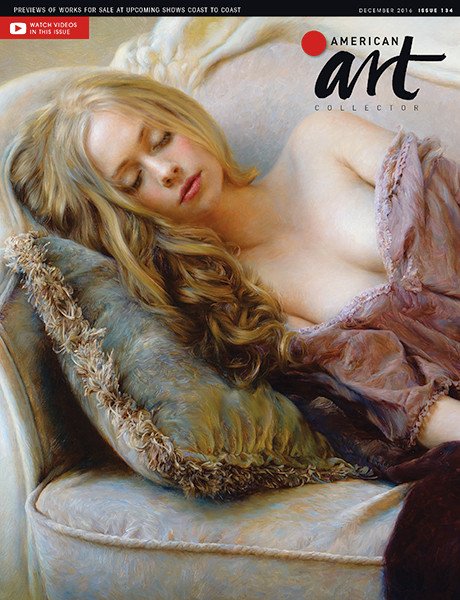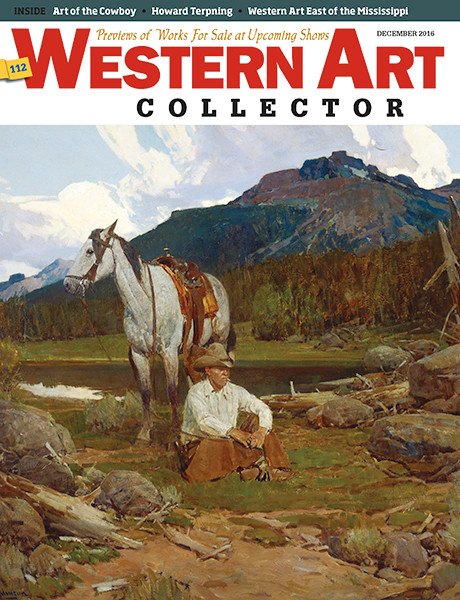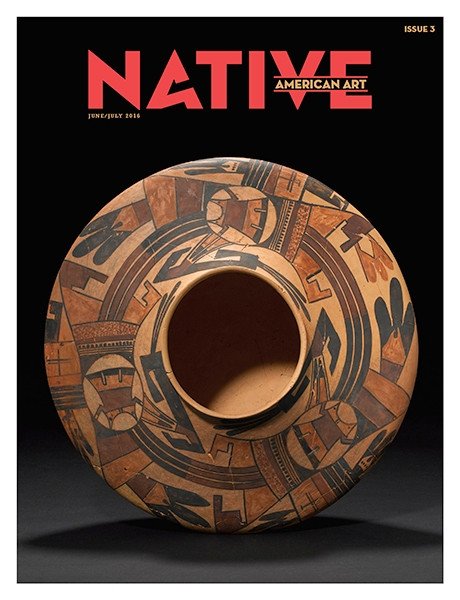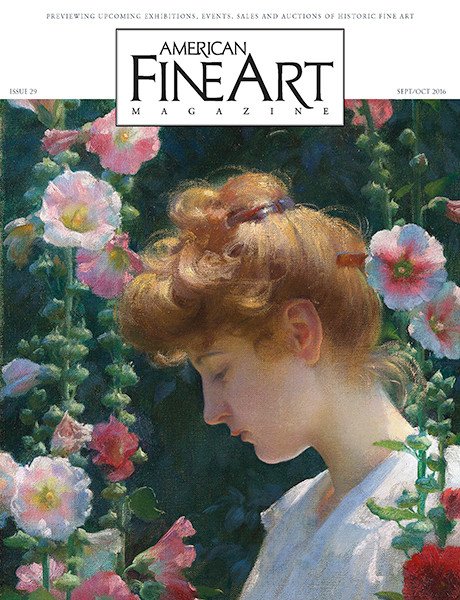A viewer once commented on one of my landscapes, “I have no idea where these scenes are, but I feel like I’ve been there.” That’s what I hope for in my paintings—a sense of familiarity that we can relate to and also a sense of mystery that may leave us asking, “What’s on the other side of those trees, who is behind the window, where will that road lead us?”

Paper Moon, oil on linen, 28 x 40” (71 x 101 cm)
Blue House in Summer began as a scene very familiar to me. It’s one in a series called Here on Our Hill that I have underway for an upcoming solo exhibition. The theme is what I see every day, through the changing light and seasons, when I walk the mile from my home to my studio. Both where I live and work are on the same hilly dirt road in rural Vermont, where I see farms, fields, ponds and 19th-century farmhouses like the one shown here. I love the beauty and quiet of my morning and evening “commute” and am inspired by how colors and visual compositions change through the year.
In art school I began as a plein air painter and years later continue to travel with my oils, watercolors and French easel to locales around the world. But in my studio, I find I’m more interested in invention than in literal description, using my landscape studies and photo references as a springboard to experiment with colors and shapes.

To the Water, oil on linen, 44 x 44” (111 x 111 cm)
Though these studio landscapes are informed by my years of painting outside from nature, they go their own way as they unfold. Hopefully by the end of this process of addition and subtraction, the painting retains both the sense of place and the emotions that inspired it, and holds the simplification and abstraction that so appeal to me.
My Art in the Making Blue House in Summer
 Stage 1
Stage 1
Stage 1 Graphite and Watercolor Study
I was attracted to paint this house on my hill by its unusual color and the simple but elegant geometry of its shape. My first step is a quick graphite and watercolor study from my car on a cold winter morning. The drawing accurately shows the front of the house facing the road, a truck and small mountains in the background, but it’s possible these elements won’t make it into the final composition.
 Stage 2
Stage 2Stage 2 Photoshop Study
I always begin my studio paintings with a small study, either with oil on paper, or in Photoshop (as this one is) to help me begin working out color, mood and value composition. My starting point for these studies are photo references and drawings made on site. This is the stage for major edits in composition. Here I decide to turn the house and change its orientation in the landscape so that the panorama of fields, hills and trees is behind it. I also create a cast shadow in the foreground, remove a tree that was in front of the house and begin simplifying the distant landscape.
 Stage 3
Stage 3Stage 3 Grid Sketch
I grid both the sketch and canvas, and then transfer the drawing by copying the shapes within the squares, further refining my composition as I go. Blue pencil erases easily with solvent if I need to make adjustments.
 Stage 4
Stage 4Stage 4 Starting on the Values
I begin laying in values with thin washes of ultramarine blue and burnt sienna. Both are non-staining pigments and easy to thin to a light “wash” or erase with solvent. At this stage, I want to keep paint transparent so that the composition builds slowly and I have the option to make changes. The two colors are also a help in establishing temperature, with the cool blue providing recessive space or shadow shapes and the red creating forward-moving accents.
 Stage 5
Stage 5Stage 5 Lighter Values
Now I lay in lighter values, using the color composition worked out in the palette grid. I try to keep the color shapes clean and definite, rather than overmixed and lacking hue identity. I have in mind a theme of complementary relationships—red and green, orange and blue—and also variations within that theme, with many different shades of these colors interplaying with each other.
 Stage 6
Stage 6Stage 6 Making Adjustments
After the first pass through with color, it’s time to begin adjusting. What works and what doesn’t? I look for shapes that don’t fit within the whole or don’t hold their place spatially, and at colors that call too much attention to themselves. I decide that the sky needs to be more assertive, the house feels a bit washed-out, and the whole bottom third needs rethinking. While this layer of paint dries, I’ll experiment with the composition and colors in Photoshop.
 Stage 7
Stage 7Stage 7 Experimenting in Photoshop
Playing with my painting in Photoshop allows me to easily try out big changes. Here I’ve upped the color of the sky, made the building more colorful so that it merges with the landscape effectively and experimented with shadow colors. Removing the driveway and wall in the left foreground allows more focus on the drama of the panorama and the invitation of the road disappearing into the distance.
 Stage 8
Stage 8Stage 8 Finished Artwork
Blue House in Summer, oil on linen, 40 x 50” (101 x 127 cm) In this final stage I pass through the landscape once again to adjust colors and repaint the sky to even the gradation and increase intensity. The left foreground is simplified and the front warm shadow cooled with a pure blue glaze. I decide to add more detail to the house and push the trim more orange. When the painting finally seemed unified in color and design, and communicated a feeling of peace and warmth, I was finished.








